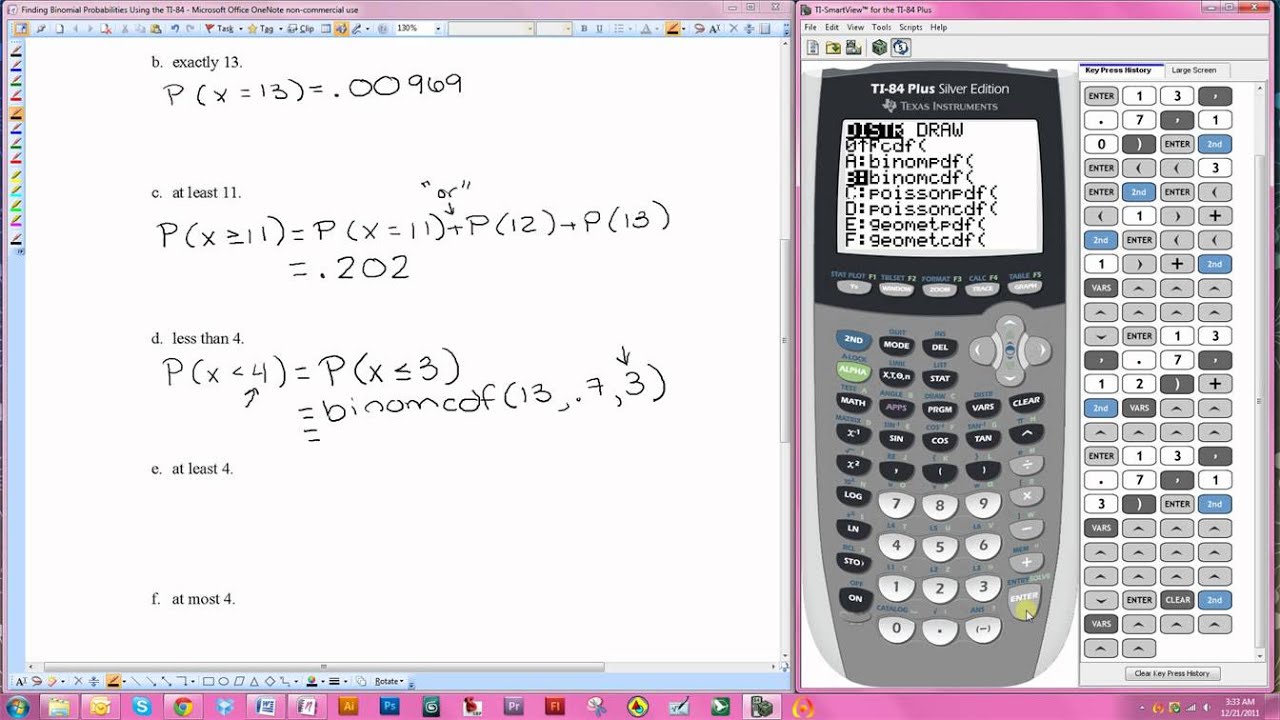Probability theory comes to use in a number of ways when it comes to our day to day dealings. It is considered an advanced mathematical concept, primarily due to the fact that a number of other basic mathematical concepts come to use when one wishes to solve questions related to probability. Probability can involve concepts such as permutations and combinations integration, and statistical theorems of various types. Hence, learning about probability also involves knowledge of these, and they enable any student to ace the topic of probability. Read on to find how you can do binomial probability.
Have you ever been stuck on a basic probability question? Do you have difficulties in visualising probability solutions of the advanced type? No doubt these problems can be hard, but learning theorems such as the binomial theorem work toward making a large chunk of problems considerably easier to solve. This article aims to answer a number of questions its readers might have, such as the following.
What is the binomial theorem?
How is the binomial theorem used in probability theory?
What are the applications of binomial theorem when it comes to probability?
What are the advantages of using the binomial theorem in probability theory?
Table of Contents
Binomial Theorem
A binomial expression contains two variables. Binomial expansion is used for the description of the algebraic expansion of binomials with an exponent. As per the theorem, the expression (a + b)n can be expanded into the sum of terms of the type kacbn-c , where k is the coefficient of each term, known as the binomial coefficient. The binomial coefficient is a very important value, and from the academic perspective, questions relating to the binomial theorem will generally be a play on the binomial coefficients of various terms.
Each term of expansion will generally have a characteristic binomial coefficient. Binomial coefficients of various terms will generally be deduced from an arithmetic concept known as the Pascal’s Triangle. The Pascal’s Triangle is a geometrical entity with rows of increasing length as it proceeds downwards. The top corner starts with the number 1, which is the coefficient of the term obtained for a binomial expansion with exponent 0. The next row contains two elements, 1 and 1, which are the coefficients of the binomial terms obtained when the exponent is 1. So on, the Pascal’s Triangle proceeds indefinitely to infinity, each successive row containing the coefficients of the terms for the next binomial exponent.
The binomial theorem can also be explained through geometric concepts, though this is possible only up to the 3rd exponent as our visualisation is limited to three dimensions. Since (a + b)1 is a line segment, (a + b)2 is a square and (a + b)3 is a cube, different shapes can be used to demonstrate the validity of the binomial theorem from the 1st exponent to the 3rd exponent.
Combinatorics in the Binomial Theorem
Another concept worth studying is the role of combinatorics in the binomial theorem. Combinatorics can be extremely useful to deduce the coefficients of the terms of the binomial expansion. Combinatorics is generally used in solutions such as finding the number of ways in which a person can choose a certain number of elements from a set. There are two methods through which this can be done. The first method is known as permutations. In this method, the order in which the elements are chosen from the set is of importance. Hence, this will generally yield a larger number of results than the second method, known as combinations. In this method, the order in which the elements are chosen from the set does not matter.
The coefficients of a binomial expansion are generally expressed through the second method. The (k+1)th coefficient of a binomial expansion with exponent is expressed as n!/k!(n-k)!. Here, the symbol ! stands for factorial, which is the product of the number preceding the symbol and all the numbers below it, up to 1. This is also expressed as nCk.
Under the rules of combinatorics, nCk = nC(n-k). This can be proved by the combinatorial expansion of this expression –
nCk = n!/k!(n-k)!
nC(n-k) – n!/(n-k)!k!
As you might be able to realise, the coefficients of the binomial expansion form a sort of palindrome, in which the kth coefficient from the front is the same as the kth coefficient from the back.
Binomial Distribution
You might have often come across the concept of a binomial distribution. If not, you’ve surely seen the bell curve, which rises and the falls with a single peak, and is nearly symmetrical on both sides of this peak. This bell curve represents the binomial distribution.
The binomial distribution is most often observed for experiments for which only two results are possible. These can be pass and fail experiments, success and failure experiments or the simple tossing of a coin to obtain a head or a tail. The binomial distribution is used to determine the number of successes in any such two result experiment when a certain number of independent experiments are conducted.
The Use of the Binomial Theorem in Probability
The binomial theorem is used in probability and statistics due to the aforementioned theorem and distribution. There are two main components of any binomial distribution. These two elements are n and p, where n is the number of independent experiments that have been conducted, and p is the probability of success in each individual experiment. This probability will generally be given as a part of the question that has been asked.
If you need to know the probability of success in k trials if n trials have been conducted, and the probability of success in each trial is p, this probability will be nCk pk (1-p)(n-k). You will observe that this solution is of the form of a term in the binomial expansion of p and (1-p) with exponent n, for the kth term. That is why this type of probability is known as binomial probability.
Examples in the Usage of Binomial Probability
- The most common question you are likely to encounter when it comes to binomial probability, is related to the tossing of coins. This is due to a common misconception. Generally, if asked, for example, the probability of getting 3 heads when 4 coins are tossed, one would be likely to simply take the coin probability of ½ and impart the exponent 3 to it. However, the real method to solve this question is through the use of binomial probability. To calculate the probability of getting 3 heads in 8 trials, the solution will be given by 8C3 (½)3 (1 – ½)(8-3).
- The coin toss question is an easy, yet tricky example of binomial probability because the probabilities of success and failure are the same. However, in most cases, the success and failure probabilities will be different. Consider the example of getting a multiple choice question correct. What is the probability of getting 8 out of 10 multiple choice questions correct, when each has only one correct option out of 4, and choices are marked at random? Here, n = 10, k = 8, and p = ¼. The solution will be given by 10C8 (¼)8 (1 – ¼)(10-8).
- Consider another really common example; this time for the probability of an event not happening. What is the probability of rolling a die 7 times, and not getting a 5 a total of 4 times? Here, You know that the probability of getting a 5 is ⅙. Correspondingly, the probability of not getting a 5 in one trial is 1 – ⅙, which is ⅚. So, the solution to this question will be given by assigning n = 7, k = 4 and p = ⅚. So, the result is 7C4 (⅚)4 (1 – ⅚)(7-4).
Conclusion
Data analysis has become a major buzzword in today’s era. Data analysts conduct studies on large amounts of data, and probability theory and the binomial theorem play significant parts in these studies. When learning about data, not only can you get data simplified with Cuemath, but will also be able to carry out investigations of real life data. This article is aimed to help the reader understand the importance of binomial probability in the probability theory. This was done by giving the reader a thorough understanding of the binomial theorem, combinatorics and their use in probability. Examples were also provided to strengthen understanding. As a next step, you may now move on to real data examples, or even make your own questions for practice!




